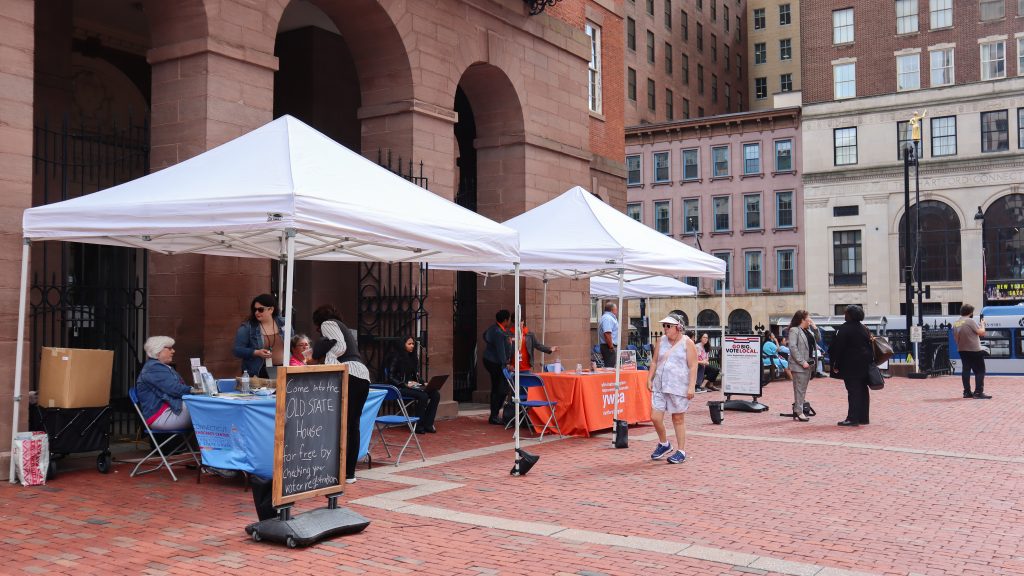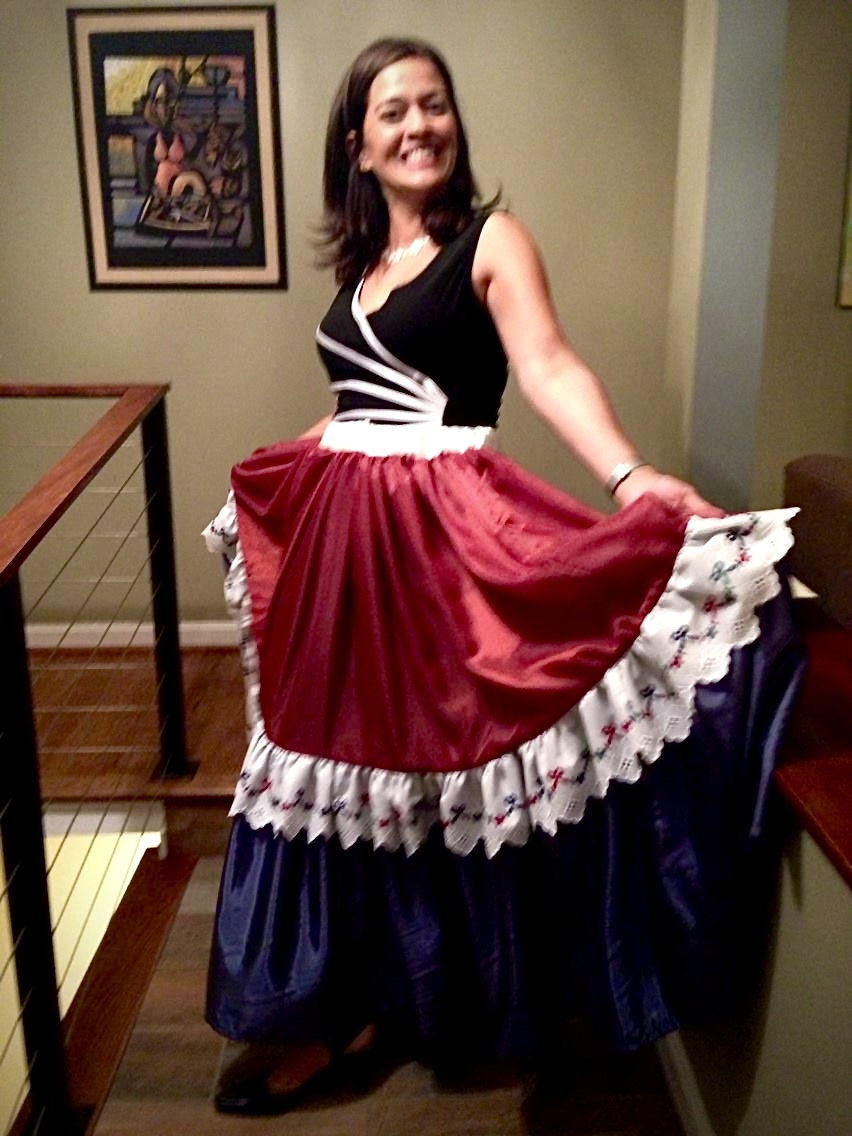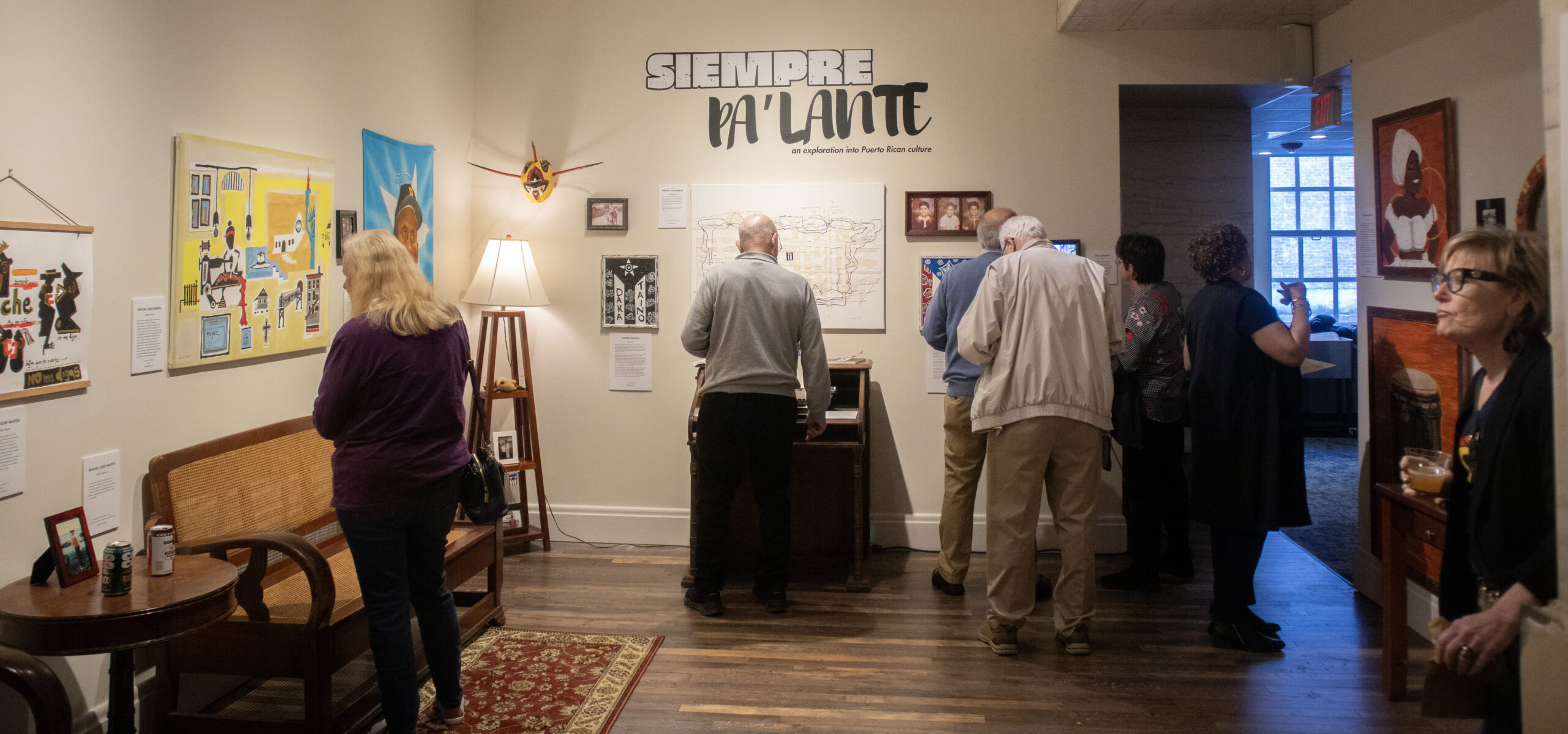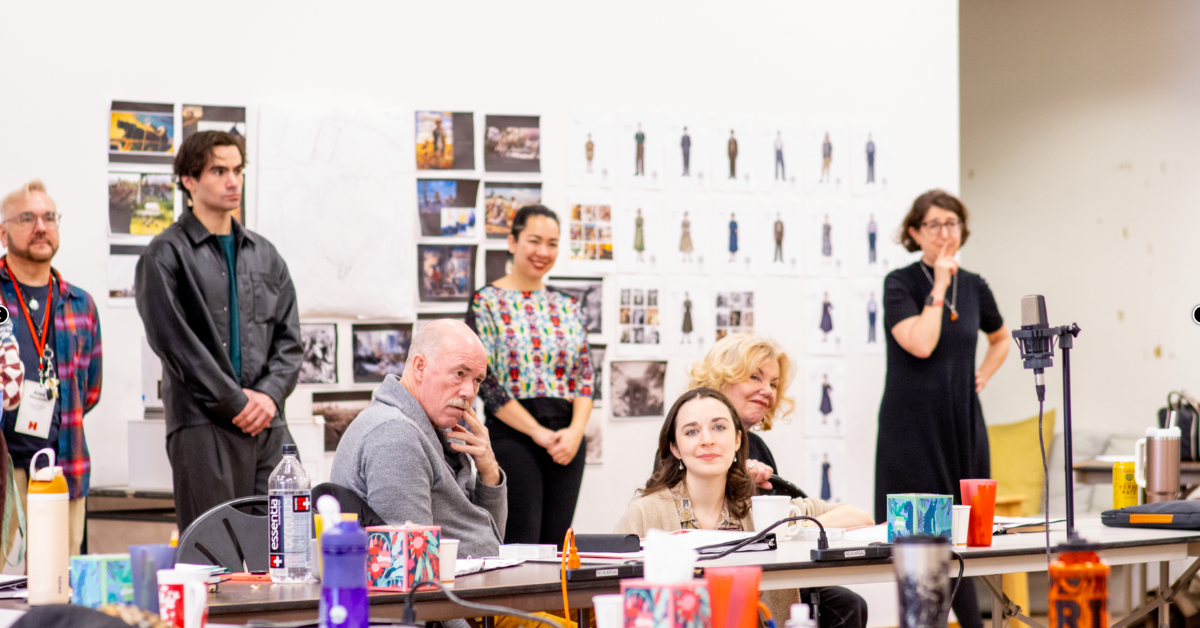HARTFORD—Reggae and gospel melodies drifted down Main Street on a Tuesday afternoon, inviting residents walking by the Connecticut Old State House to two voter registration tables that stood outside the historic building.
CT’s Old State House and YWCA staff and volunteers from the League of Women Voters of Greater Hartford ran both tables from noon to 4 p.m. They answered questions and offered materials in English and Spanish on voting to about 231 patrons, according to CT Old State House Public Programs and Exhibitions Manager Mariana García de la Noceda.
The Sept. 19 event, held on National Voter Registration Day, is just one of the engagement efforts in the “Go Big. Vote Local” series that runs throughout September and October at the CT Old State House in downtown Hartford. The event was supported by a $10,000 Voter Engagement Grant from the Hartford Foundation for Public Giving.
Organized by the CT Democracy Center, the Go Big. Vote Local Series has been a collaborative effort among community organizations to raise voter turnout among Hartford’s diverse community, said Barbara Glassman Dell of the CT Democracy Center.
“A lot of times people just feel like ‘oh, it is what it is, it’s local elections, it’s not important’ but actually when you think about it, those are the most important because it’s where you live,” Dell said in a phone interview. “If there are barriers…or you have been disenfranchised where you feel like you haven’t been represented…what ends up happening is a small pool of people essentially are making decisions and so how do we empower people to feel invested…that essentially your vote is your voice?”

Last year, Connecticut saw a state-wide decline in voter turnout rates—particularly in major cities, including New Haven, Bridgeport, and Hartford and within the democratic party.
About 58.6 percent of eligible voters casted a ballot in 2022—a slight decline from 2018, when the voter turnout rate reached 65.2 percent. Voter turnout did hit a record high in 2020 at nearly 80 percent, but this has not surprised most as it is well known that more people vote in larger, federal elections than in state or local elections.
“25 percent of the tax revenues we collect as a country are spent at the local level,” said Director Tanya Rhodes Smith of Nancy A. Humphreys Institute for Political Social Work. “That’s an enormous amount of investment that gets directed and decided on the local level and when very few people participate in a local election those folks have more power than the folks who aren’t participating.”
Hartford has the largest Hispanic/Latino community in the state as these residents represent 44 percent of the capital’s population. About 36 percent of Hartford residents identify as Black, 13 percent as white, 3 percent as Asian or Pacific Islander, and 4 percent as another race/ethnicity, according to Smith.
“The diversity of Hartford is really important when we talk about voter turnout because there are barriers to turnout,” said Social Action Committee Chair Kristen Clark of Hartford Alumnae Chapter of Delta Sigma Theta Sorority, Inc. “The process of voting is not easy for everyone.”
Speakers at Tuesday’s event emphasized how aspects of our daily lives are largely decided on the local and state level, including public education, infrastructure, public safety, social services, access to healthcare, and more.
“Hartford ranks amongst the lowest turnout and there are some reasons for that…a highly mobile population, multiple languages, and barriers of information,” Smith explained. “All of those barriers—language, information, logistics—contribute to this engagement barrier, so the barrier that says ‘my vote doesn’t matter, nothing changes’. That is very significant for a lot of people, at least 40% of people don’t vote because of that engagement piece, because those structural barriers really feed those narratives, which we know are false, voting matters a lot especially on the local level.”
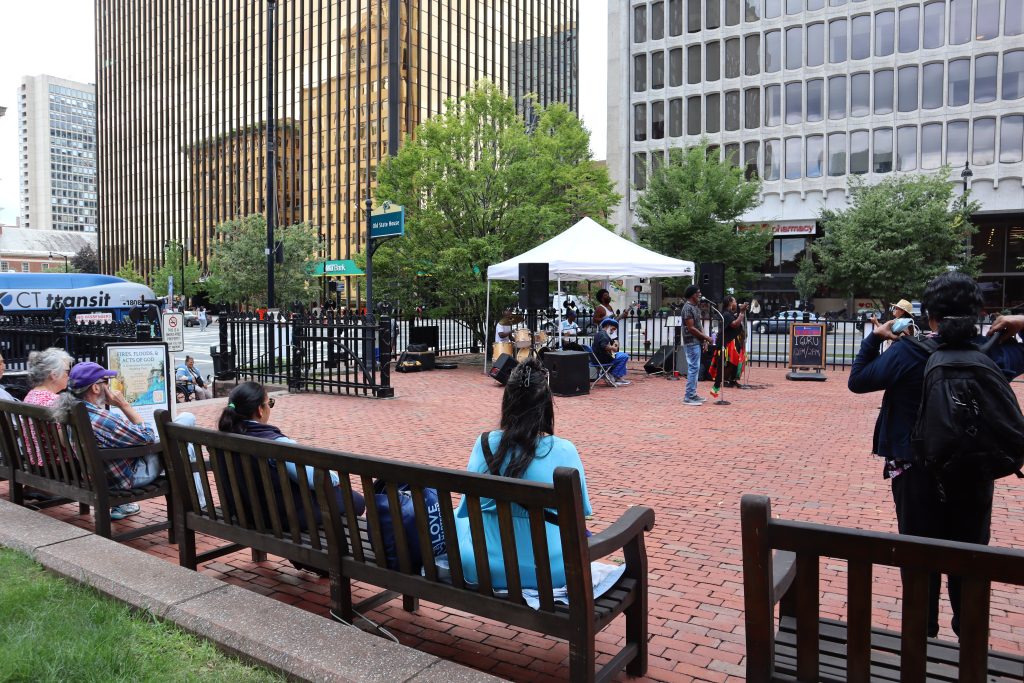
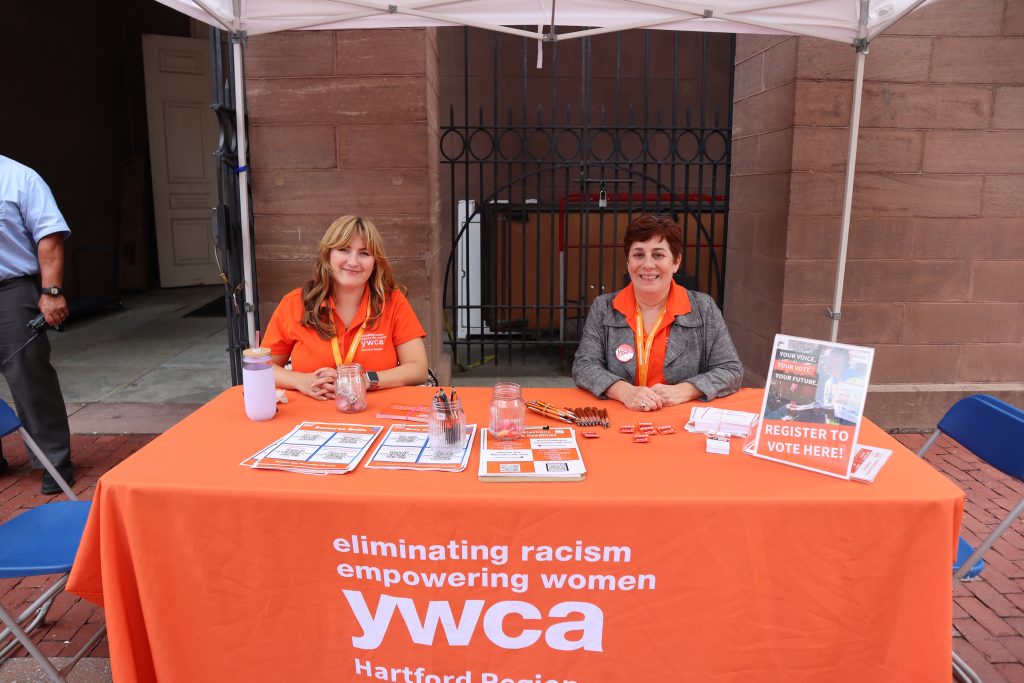
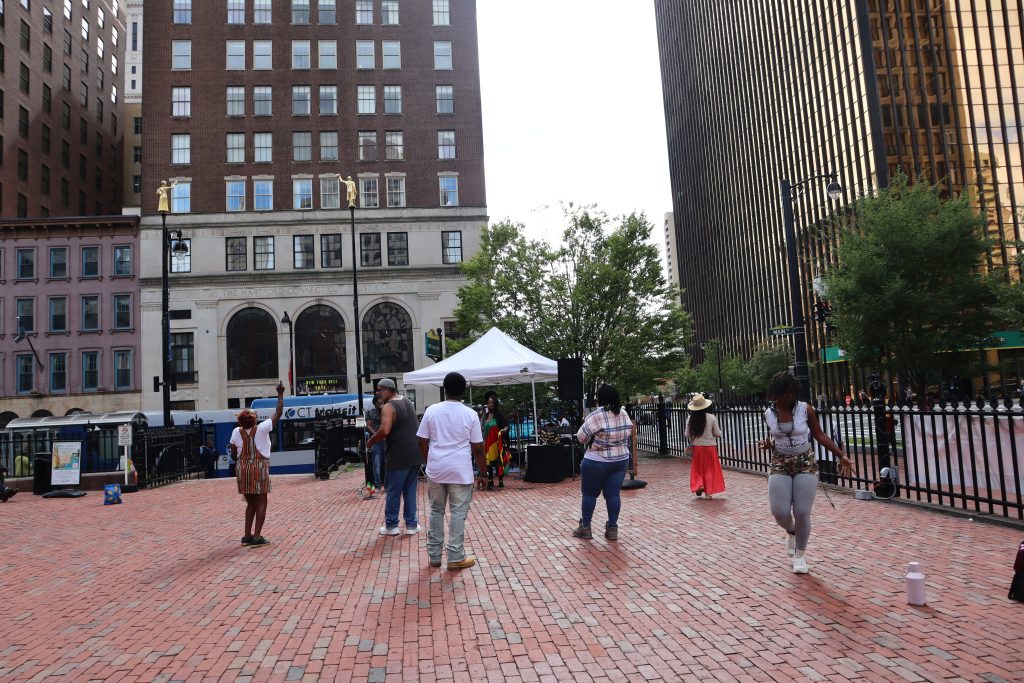
The ongoing Series also includes an editorial cartoon exhibit—“Running For Office” which runs from Sept. 8 to Nov. 13—a discussion with historian Dr. Matthew Warshauer on the history of political cartoons, a conversation with Editorial Cartoonist Bob Englehart on Oct. 21, an Election Cake Bake-Off on Nov. 4, and Caricature Workshop on Nov. 11.
At the Voter Registration Celebration, Smith and Clark spoke on a panel about the importance of local elections and how barriers affect voter turnout.
“It’s really trying to engage that person who thinks their vote doesn’t matter, or they’re not able to vote and really dispelling some of those myths. That is the work that we all need to be doing if we want to have a truly democracy that is a voice for the people,” Clark said.
There are a variety of resources available online on voting and upcoming elections that residents are still not aware of. Smith and Clark emphasized the importance of having personal conversations to motivate potential voters and connect them with existing resources.
“We are partnering with other civic community organizations to do some kind of grassroots efforts,” Clark shared. “You really do have to go door to door…you really have to get to where the people are.”
The digital divide across Connecticut can be another barrier for underserved communities in accessing information and services on voting, but Smith pointed out that services like Turbovote use text messaging to assist voters with limited internet access.
“More people have cellphones and we are doing more capacity building. There are some things that technology makes easier,” she explained. “While those divides exist, it can also be a way to build capacity especially in communities that have been historically where turnout has been low.”
At around 3 p.m., volunteers and staff gathered inside the Old State House to share more information on topics like who can vote, how people can register to vote, voting-related resources, and who can run in elections. They also provided materials and answered questions one-on-one with attendees over pastries and coffee.
“Imagine if every place and space in Hartford engaged people to vote all year long…If we could do that in all of the spaces where we are in Hartford all year long we could change this culture on voting,” Smith said earlier that afternoon. “Your community is your power. If you can raise the voter turnout in your community you will have more power to advocate for more resources and more investments.”
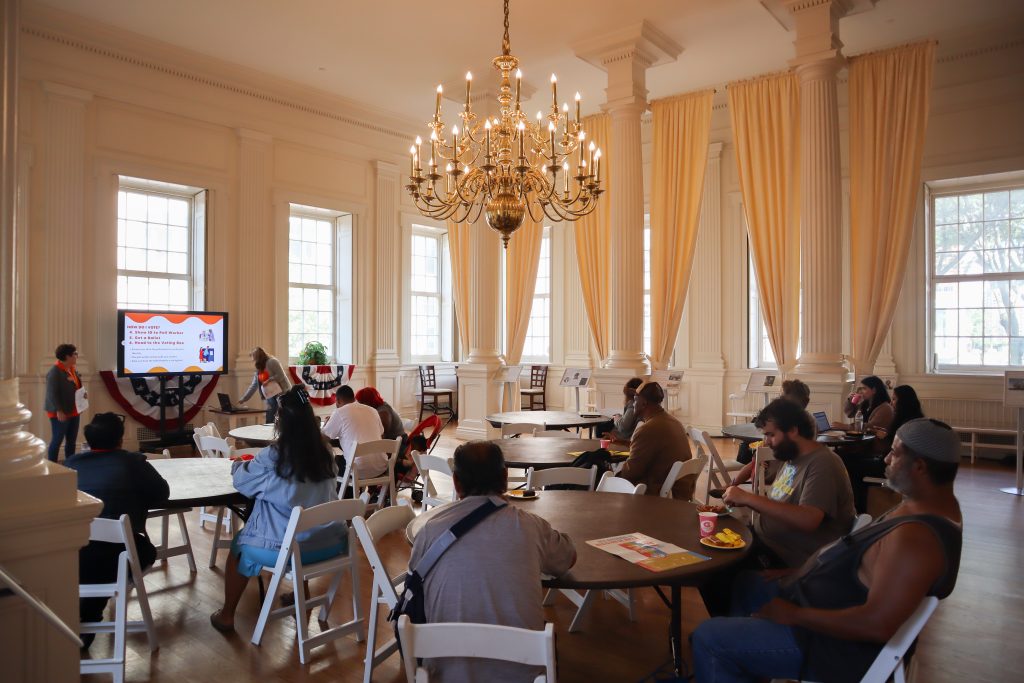
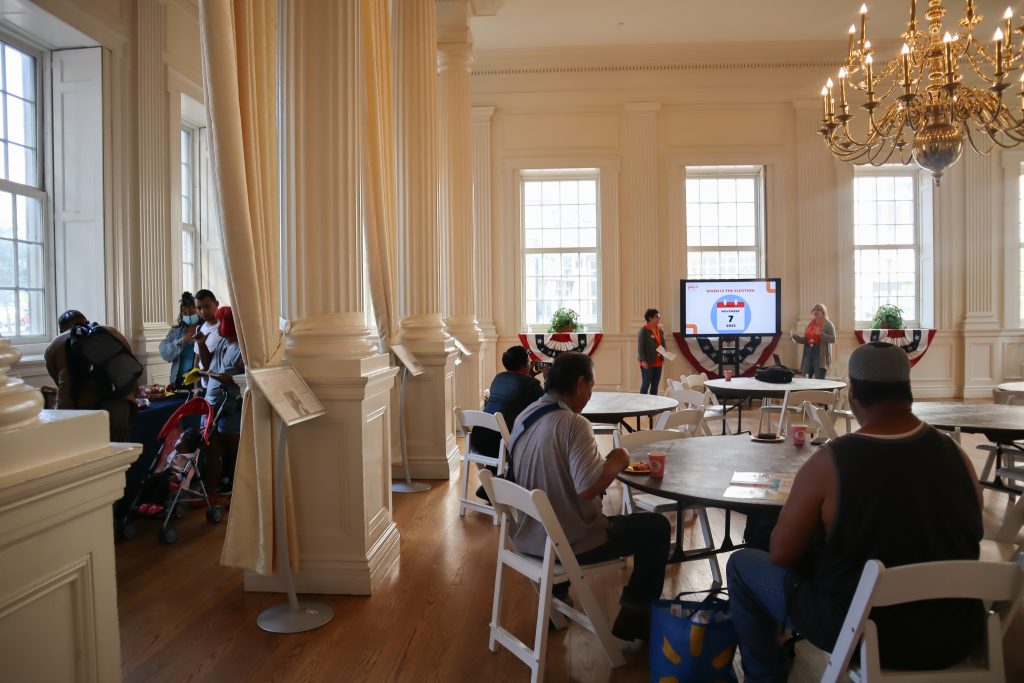
Publisher’s Notes: This story is supported by the Advancing Democracy Journalism Fellowship—run by the Solutions Journalism Network, Hearken, and Trusting News—which looks to elevate coverage of local democracy and civic engagement. CT Latino News is committed to covering the social determinants of health and democracy.

